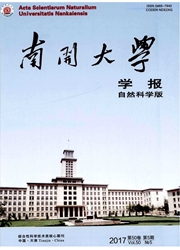

 中文摘要:
中文摘要:
通过原代培养大鼠乳鼠心肌细胞,利用10μmol/L阿霉素损伤模型,观察人参皂苷Rg3抗化疗药物阿霉素导致的大鼠乳鼠心肌细胞损伤的作用及机制。结果发现10μmol/L阿霉素作用24h可显著抑制细胞活力,过氧化损伤及细胞凋亡增加。人参皂苷Rg3可显著促进细胞活力,降低乳酸脱氢酶(LDH)释放,增加超氧化物歧化酶(SOD)活性,降低活性氧(ROS)及丙二醛(MDA)含量,降低Fas及Bax/Bcl-2mRNA的表达。人参皂苷Rg3可通过抗氧化损伤及抑制细胞凋亡减轻阿霉素的心肌细胞毒性作用,这对从中药人手寻求减毒的方法对蒽环类化疗药物临床应用具有重要的指导作用。
 英文摘要:
英文摘要:
Primary cultured neonatal cardiac myocytes of rat were used to establish the cell injured model by 10μmol/L ADM. To analyze the effect of Ginsenoside Rg3 on reducing ADM-induced damage on cardiac myocytes. After 24 h incubation, cell viability was signifi- cantly reduced by 10 μmol/L ADM accompanying with peroxidative damage and increace of cell apoptosis. Ginsenoside Rg3 could significantly increase cell viability, reduced Lactate dehydro- genase (LDH) release, increased superoxide dismutase (SOD) activity and reduce reactive oxy- gen species (ROS) and lipid peroxidation product malondialdehyde (MDA) content, inhibit ex- pression of Fas and Bax/Bcl-2 mRNA expression. Ginsenoside Rg3 can reduce ADM-induced damage on cardiac myocytes by increase cell viability, inhibit oxidative stress and cell apopto- sis. This is a very important instruction role to the clinical application of anthracyclines chemotherapeutics and the traditional chinese medicine attenuated the cardiotoxicity.
 同期刊论文项目
同期刊论文项目
 同项目期刊论文
同项目期刊论文
 期刊信息
期刊信息
